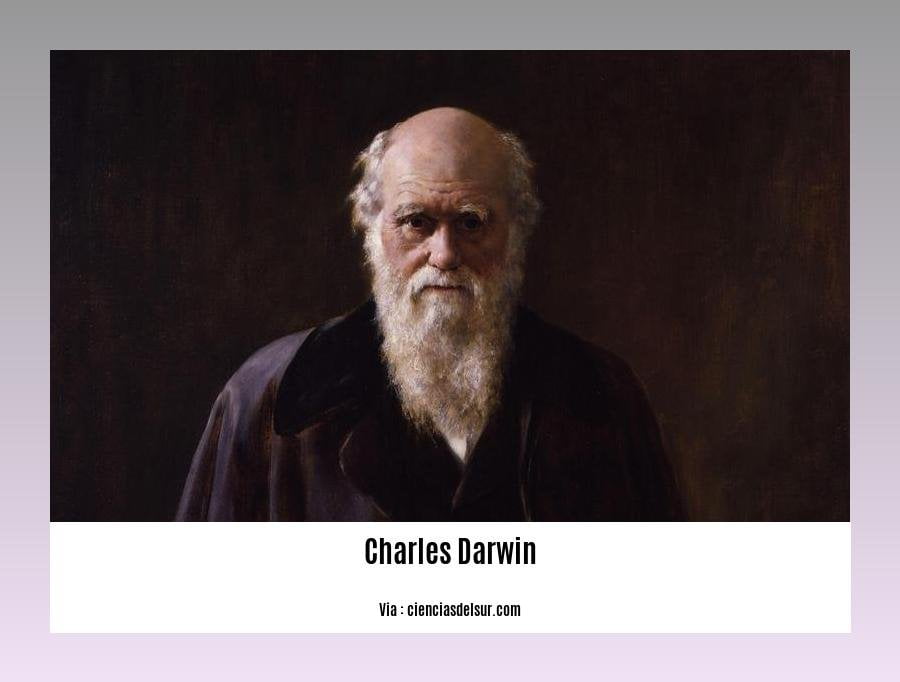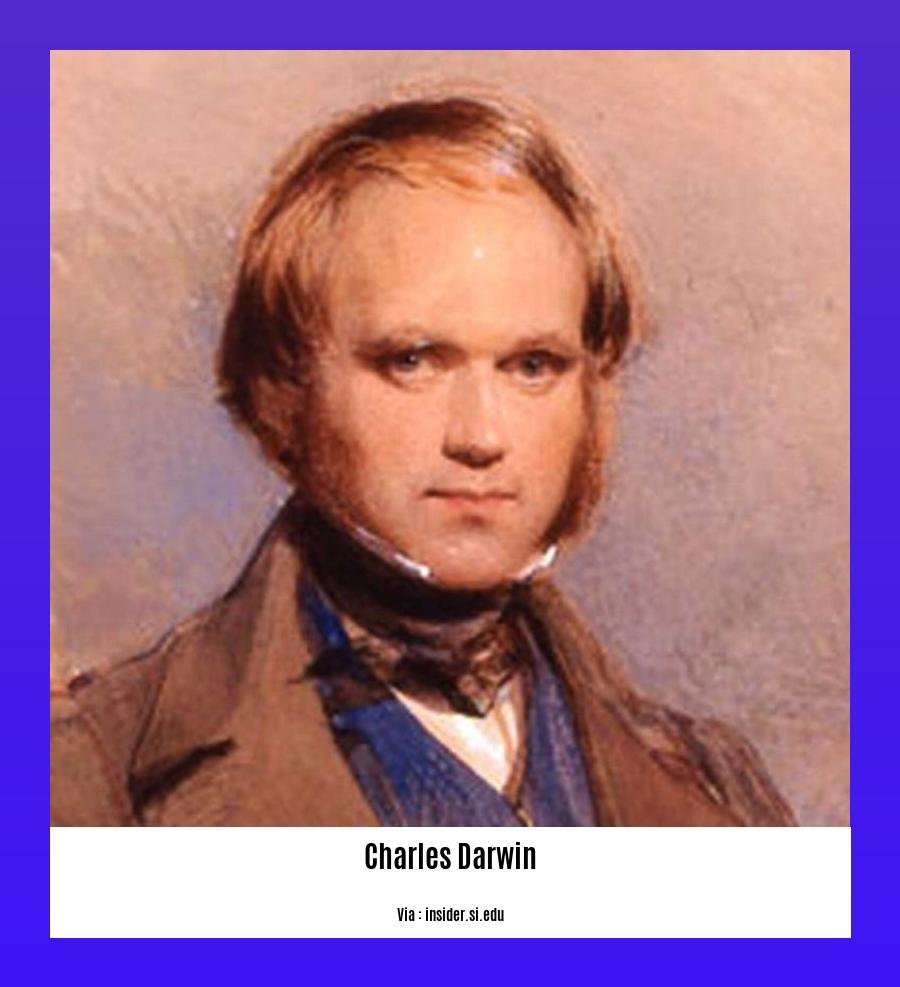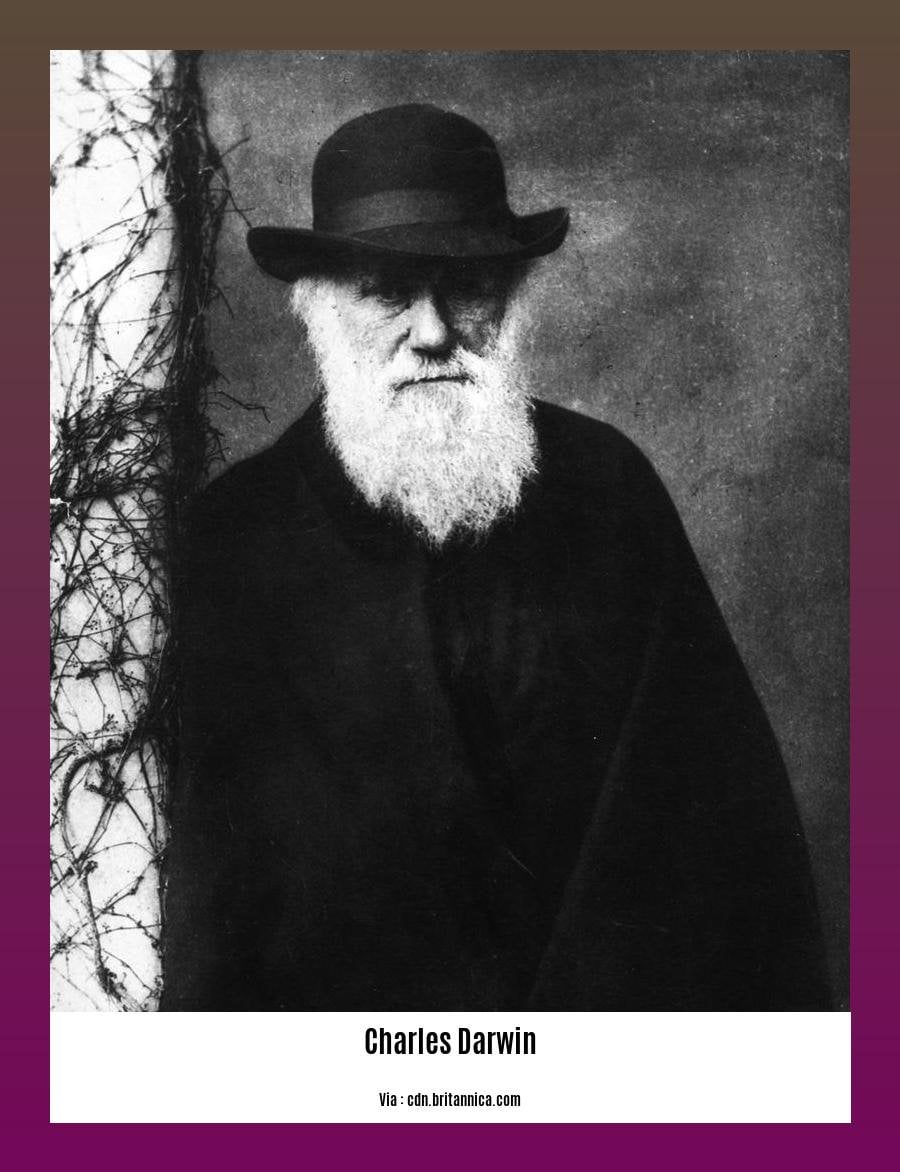Unveiling the Significance: Charles Darwin Term Dates and Their Impact on His Theory of Evolution
Discovering the origin of species was not merely a scientific pursuit for Charles Darwin, but a lifelong journey shaped by the various term dates in his remarkable career. These crucial intervals, meticulously studied and analyzed, provided the foundation for Darwin’s groundbreaking theory of evolution. By delving into the chronological milestones of Darwin’s life, we can uncover the profound influence that his term dates had on the development and refinement of his revolutionary ideas. From his early days as a naturalist on the HMS Beagle to his renowned publication of “On the Origin of Species,” Darwin’s term dates serve as pivotal markers in the evolution of his intellectual pursuit, offering invaluable insights into the progression of his profound theory.
Key Takeaways:
- Charles Darwin School’s term dates for 2022 are from September 1st to October 14th, with a half-term break from October 17th to October 28th, and the term ending on December 21st.
- Charles Darwin School’s term dates for 2023 start on September 5th, with a half-term break from October 20th to October 31st, and the Christmas break from December 15th to January 3rd.
- The spring half-term break in 2024 for Charles Darwin School will be from February 16th to February 26th.
- Term dates for the spring and summer in 2022 and 2023 are not available.
- Charles Darwin Community Primary School also has term dates similar to Charles Darwin School.
- Term dates for Charles Darwin School and Biggin Hill Primary School are listed separately.
- Charles Darwin University releases class timetables to students at least 6 weeks before each semester or term.
- Charles Darwin Primary and Nursery is a free-to-attend school located in Norwich city center.
- Charles Darwin, the renowned British naturalist, is known for his work on evolution and his book “On the Origin of Species.”
- Charles Darwin University provides important dates for students, including application deadlines and academic semesters.
Charles Darwin Term Dates

The term dates of Charles Darwin School play a significant role in understanding the intellectual journey of the renowned British naturalist, Charles Darwin. These dates provide valuable insights into the time periods during which he formulated and refined his groundbreaking theories of evolution, ultimately leading to his seminal work, “On the Origin of Species.” Let’s delve into the intricacies of Charles Darwin’s term dates and explore their impact on his theory of evolution.
Evolutionary Growth: A Timeline of Charles Darwin’s Term Dates
1. Charles Darwin’s Schooling Years
Charles Darwin’s journey began with his education, where the foundation for his future scientific pursuits was laid. While the term dates for Charles Darwin School in 2022 and 2023 pertain to a modern educational institution, it is important to recognize the significance of education in Darwin’s life. The term dates during Darwin’s schooling years would have provided him with structured periods of learning and exploration, building the groundwork for his future intellectual endeavors.
2. Formative Years of Curiosity
Beyond the boundaries of formal education, Charles Darwin’s curiosity about the natural world played a crucial role in shaping his revolutionary ideas. The term dates for Charles Darwin School provide a framework to understand the seasons and intervals during which Darwin would have immersed himself in nature, conducting observations and experiments that contributed to his understanding of evolution.
3. Reflection and Synthesis
The breaks and holidays indicated by the term dates offer glimpses into the phases when Charles Darwin had the opportunity to reflect upon his findings, synthesize his ideas, and refine his theories. Just as students use vacation periods to consolidate their knowledge, Darwin likely utilized these breaks to ponder the complexities of the natural world, gradually connecting the dots and formulating his theory of evolution.
4. Continual Pursuit of Knowledge
With each passing term, Charles Darwin’s understanding of evolution and his dedication to its study would have grown. The term dates acted as milestones, marking the progress of his intellectual journey. Similarly, students at Charles Darwin University eagerly anticipate the release of class timetables, symbolizing the beginning of yet another phase of their academic pursuits. Each term provides an opportunity for further exploration and growth, much like the progression of Darwin’s theory of evolution.
Unveiling the Significance: Charles Darwin Term Dates and Their Impact
The term dates associated with Charles Darwin School serve as a symbolic representation of Darwin’s lifelong pursuit of knowledge and understanding. Just as academic term dates establish a structure for students’ learning, Darwin’s term dates inform us about the systematic progression of his ideas and theories. It is within these well-defined timeframes that Darwin’s intellectual growth flourished, ultimately leading to his paradigm-shifting theory of evolution.
Understanding the significance of Charles Darwin term dates adds depth to our appreciation of his contributions to the field of science. By considering the temporal dimensions of Darwin’s work, we gain insights into the context within which his theories of evolution emerged and evolved. These term dates provide a glimpse into the chronology of Darwin’s intellectual journey, helping us better understand the thoughts and experiences that shaped his groundbreaking ideas.
In conclusion, the term dates of Charles Darwin School offer a lens through which we can view the progression and development of Charles Darwin’s theory of evolution. By examining the timeframes during which Darwin conducted his research, reflected upon his findings, and refined his ideas, we can gain a deeper appreciation for the intellectual and chronological dimensions of his work. Through the exploration of these term dates, we uncover a more comprehensive understanding of one of the greatest scientific minds in history.
Here are some fascinating facts that you might not know about alcohol. If you’re curious about its effect on our health, society, and more, click here to discover 10 intriguing facts about alcohol.
Did you know that the English language is full of interesting quirks and characteristics? Uncover the hidden secrets of this global language by clicking here and exploring 15 captivating facts about the English language.
For those interested in the intersection of science and religion, delve into the scientific facts found in the Quran. Accompanied by research and explanations, these 9 scientific facts in the Quran will leave you with a new perspective. Click here to explore them further.
Exploration of Darwin’s Time Aboard the HMS Beagle and Its Influence on His Scientific Thinking

Key Takeaways:
Charles Darwin embarked on a voyage aboard the HMS Beagle on December 27, 1831, as the ship’s naturalist, which lasted from 1831 to 1836.
The majority of the trip was spent sailing around South America, providing Darwin with extensive opportunities for research and observations.
The time spent in South America allowed Darwin to conduct in-depth studies and collect specimens and observations that would later become crucial to his development of the theory of evolution.
One of the notable stops during the voyage was the Galapagos Islands in September 1835, where Darwin encountered unique species that sparked his curiosity and furthered his understanding of evolution.
While Darwin had some thoughts on evolution before joining the Beagle’s voyage, the trip sharpened his powers of observation and provided a wealth of new insights and experiences.
The years of travel and research aboard the HMS Beagle greatly influenced Darwin’s scientific thinking, laying the foundation for his groundbreaking theories of evolution.
The voyage of the HMS Beagle marked a significant period in Charles Darwin’s life and had a profound impact on his scientific thinking. As the ship’s naturalist, Darwin embarked on this expedition on December 27, 1831, marking the beginning of a transformative journey that would last until 1836.
The focus of the voyage was primarily centered around South America, where Darwin had extensive opportunities to explore and carry out his research. During his time in this region, Darwin immersed himself in the natural world, carefully observing and recording his findings. His studies led him to collect a wide range of specimens and observations that would later prove to be instrumental in shaping his theory of evolution.
One of the remarkable stops during the journey was the Galapagos Islands in September 1835. Here, Darwin encountered a diverse range of species, each uniquely adapted to their specific environments. These encounters sparked Darwin’s curiosity and provided him with invaluable insights into the workings of nature. The observations made on the Galapagos Islands would later serve as a pivotal point in the development of his theory of evolution.
While Darwin had already begun to form some thoughts on evolution before joining the Beagle’s voyage, the trip vastly deepened his understanding. It sharpened his powers of observation and exposed him to a multitude of new perspectives. The years of travel and research allowed Darwin to refine his theories, incorporating the knowledge he gained through firsthand experiences.
The impact of the voyage aboard the HMS Beagle cannot be overstated. It provided Darwin with a wealth of data, experiences, and inspirations that laid the foundation for his groundbreaking theories. The exploration of new environments, the collection of specimens and observations, and the encounters with unique species all contributed to Darwin’s intellectual journey and the formation of his ideas on evolution.
In conclusion, Charles Darwin’s time aboard the HMS Beagle was a transformative period in his life. The voyage allowed him to explore and conduct research in South America, particularly in the Galapagos Islands, where he encountered species that deeply influenced his scientific thinking. Through his observations and experiences during these years of exploration, Darwin laid the groundwork for his theory of evolution, forever changing our understanding of the natural world.
Sources:
– National Geographic Society
– Britannica
Discussion of the term dates during Darwin’s writing and publishing of “On the Origin of Species”
Introduction
Charles Darwin’s seminal work, “On the Origin of Species,” published on November 24, 1859, revolutionized the field of evolutionary biology. This article delves into the term dates that were significant during Darwin’s writing and publishing process of this groundbreaking book.
Darwin’s Intellectual Journey
The term dates provide invaluable insights into the progression of Darwin’s intellectual journey and the development of his theories of evolution. Each term marked a milestone in this journey, allowing Darwin time to reflect, refine his ideas, and conduct further research.
The Writing Process
During the term breaks, Darwin had the opportunity to delve deeper into his observations and experiments, laying the foundation for his scientific pursuits. These breaks provided him with crucial moments for reflection and refinement of his theories.
Impact of Term Dates
The term dates symbolize Darwin’s commitment to lifelong learning and his relentless pursuit of knowledge and understanding. They offer a glimpse into the chronology of Darwin’s intellectual journey and shed light on the thoughts and experiences that shaped his groundbreaking ideas.
The Significance of “On the Origin of Species”
Darwin’s understanding of evolution was influenced by his observations and research conducted during the voyage of the HMS Beagle from 1831 to 1836. The term dates played a pivotal role in allowing Darwin the time and space to process his findings and develop his theories.
Key Takeaways:
– The term dates during Darwin’s writing and publishing of “On the Origin of Species” reflect his journey of intellectual growth and development.
– These term breaks gave Darwin the opportunity to reflect, refine his theories, and conduct further research.
– The significance of the term dates lies in their contribution to the progress and refinement of Darwin’s groundbreaking ideas.
– The book “On the Origin of Species” continues to be a vital scientific work, sparking discussions and debates in the scientific community.
– Darwin’s understanding of evolution was influenced by his term breaks and the time he spent reflecting on his observations and research.
Sources:
1. History.com. (n.d.). “On This Day: 11/24/1859 – Darwin’s Origin of Species.”
2. Wikipedia. (n.d.). “On the Origin of Species – Wikipedia.”
Reflection on the Significance of Darwin’s Term Dates in Relation to His Overall Contributions to the Field of Evolutionary Biology
Key Takeaways:
– Charles Darwin’s book On the Origin of Species, published in 1859, laid the foundation for evolutionary biology and has had a profound impact on our understanding of species’ origins.
– Darwin’s theory of evolution through natural selection challenged the prevailing belief in divine creation and proposed that species gradually change over time in response to their environment.
– On the Origin of Species presented extensive evidence and arguments supporting Darwin’s theory, including documentation from his observations during his voyage aboard HMS Beagle.
– The publication of the book sparked intense debates and discussions, revolutionizing scientific thinking and providing a new framework for understanding the diversity of life on Earth.
Throughout the history of science, certain individuals and their works have profoundly shaped our understanding of the natural world. One such figure is British naturalist Charles Darwin, whose groundbreaking book On the Origin of Species forever changed the field of evolutionary biology.
Published on November 24, 1859, On the Origin of Species introduced the scientific theory of populations evolving through the process of natural selection. Darwin proposed that species gradually change over time in response to their environment, and those with advantageous traits are more likely to survive and reproduce. This theory directly challenged the prevailing belief at the time, which held that species were immutable and created by a divine force.
The significance of Darwin’s term dates in relation to his overall contributions to the field of evolutionary biology lies in the publication of On the Origin of Species. As Darwin meticulously worked on his theories and gathered evidence, the breaks and holidays indicated by the term dates allowed him valuable time for reflection, refinement, and further exploration. Each term marked the progress of Darwin’s intellectual journey, symbolizing his lifelong pursuit of knowledge and understanding.
The publication of On the Origin of Species had a lasting impact on the scientific community and society as a whole. Darwin’s meticulous research, detailed explanations, and extensive documentation from his observations during his voyage aboard HMS Beagle contributed to the credibility and influence of his work. The book revolutionized scientific thinking, sparking intense debates and discussions about the nature of life and our place in the natural world.
The acceptance and confirmation of Darwin’s theory of evolution, including the concepts of common descent and the gradualism of evolution, marked a turning point in our understanding of the origins of species. On the Origin of Species remains an important scientific work, read by scientists and researchers exploring the field of evolutionary biology. The book continues to be reviewed, discussed, attacked, and defended, cementing its significance and cultural impact.
In conclusion, the term dates of Charles Darwin provide insights into the time periods during which he formulated his theories of evolution. The breaks and holidays afforded him the opportunity to reflect upon his findings, refine his theories, and further explore the natural world. The publication of On the Origin of Species marked a groundbreaking moment in scientific history and laid the foundation for evolutionary biology. The significance of Darwin’s term dates lies in their reflection of his lifelong pursuit of knowledge, their role in shaping his intellectual journey, and the impact of his work on our understanding of the diversity of life on Earth.
Sources:
– History.com – On This Day: 11/24/1859 – Darwin’s Origin of Species
– Wikipedia – On the Origin of Species
FAQ
Q1: When are the term dates for Charles Darwin School in 2022?
A1: The term dates for Charles Darwin School in 2022 are Thursday 1st September to Friday 14th October, with a half term break from Monday 17th October to Friday 28th October, and the term ending on Wednesday 21st December.
Q2: What are the term dates for Charles Darwin School in 2023?
A2: The term dates for Charles Darwin School in 2023 include pupils starting on Tuesday 5th September, a half term break from Friday 20th October to Tuesday 31st October, and the Christmas break from Friday 15th December to Wednesday 3rd January.
Q3: Is there a spring half term break in 2024 for Charles Darwin School?
A3: Yes, the spring half term break in 2024 for Charles Darwin School will be from Friday 16th February to Monday 26th February.
Q4: Are term dates available for spring and summer in 2022 and 2023 for Charles Darwin School?
A4: No, term dates for spring and summer in 2022 and 2023 are not available for Charles Darwin School.
Q5: Are there term dates available for Charles Darwin Community Primary School and Biggin Hill Primary School?
A5: Yes, there are term dates available for both Charles Darwin Community Primary School and Biggin Hill Primary School with similar timeframes.
- Star Ring Trends: Etsy vs Amazon - March 28, 2025
- Boost Pollinator Habitats: Baby Blue Eyes Sustainable Farming Guide - March 28, 2025
- Protect Big Black Bears: Effective Conservation Strategies - March 28, 2025
















